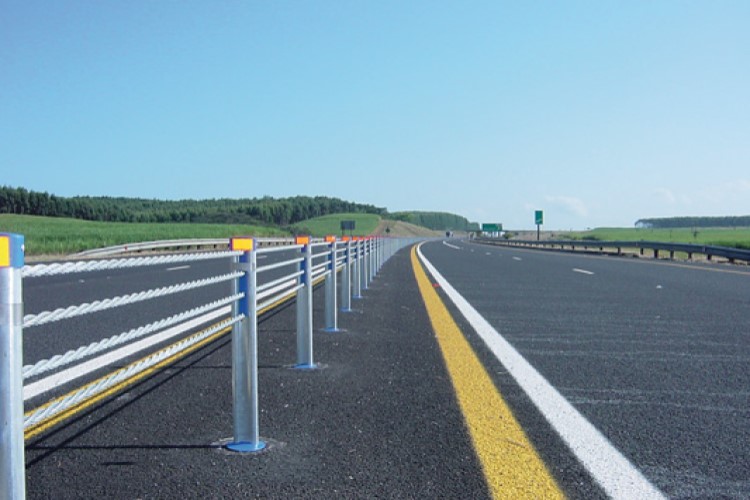Highway barriers are installed on the median of double-carriageway freeways and on the side of freeways. With vehicles travelling at high speed on highways, it is essential to prevent them from moving into oncoming traffic during accidents and to prevent motorists from making U-turns over the median into the fast lane of the opposite carriageway. Highway barriers furthermore serve to prevent pedestrians from simply walking onto the freeways. Various types are in use today, of which we briefly discuss the W-beam guardrail and the wire-rope system.
W-Beam Guardrail
Where installed on the median of double carriageways, the guardrail serves as a barrier to prevent straying vehicles from moving into oncoming traffic. The barriers also prevent vehicles from making U-turns over grass median into oncoming, fast-flowing traffic. Median barriers have steel panels attached to both sides of the posts that form the beam’s grounding points. It is important to install such beams to protect longer stretches of road rather than short sections, since the systems are more effective on longer sections. When used as highway barriers, the guardrails are higher than for urban use to cater for the high speed of vehicles using freeways and to prevent vehicles with a higher ground clearance from vaulting over them into fast-moving traffic upon impact.
The steel beams are made to last for many years. The individual posts to which the beams are attached are not strong enough to prevent dislodging, breaking, or breakthrough upon impact; however, these highway barriers function as complete systems and this is where the effectiveness lies. As a complete system, the entire length of the beams, the number of connecting posts, the depth at which the posts have been anchored, the type of post material, and height all work together to ensure a sturdy barrier.
Wire-Rope Safety Systems
These types of highway barriers are often installed instead of concrete barriers, since the wire-rope systems have less of a surface footprint. The small space taken up makes it possible to install the systems on highways where road space is limited. As such, it is possible to install them where other types of barriers cannot be used because they take up too much space. The wire-rope safety barrier is also called a cable barrier. It consists of a system of steel wire ropes attached to weak posts. The main function of this type of highway barrier is to prevent a vehicle from straying into a fixed and unforgiving object or into a hazard such as oncoming traffic, down a steep embankment or mountain slope, over the side of a bridge, or into a body of water. The wire-rope system operates by capturing and redirecting the impacting vehicle.
These types of highway barriers are more cost-effective to install than concrete types. They are lighter and can be installed without cranes to lift the barriers from the trucks. The wire-rope highway barrier is mostly installed on the median because of the system’s small footprint. The cable barriers are often installed on grass medians to prevent straying vehicles from breaking through to the opposite carriageway. The systems installed on grass medians furthermore serve to prevent motorists from making a U-turn into the fast lane of oncoming traffic.
The design of this type of highway barrier makes it possible for the system to absorb the impact energy of a vehicle colliding sideways or head-on with the barrier and to disperse it laterally. This helps to reduce the impact force on the vehicle’s occupants. Though these types of barriers have been used for many years, it was only during the nineties that transport departments started to install them more often. There are two types of wire-rope barriers. The first is the low-tension type, which has just enough tension between posts to prevent sagging of the cable. The system has springs on the ends of the cable to attain the required tension. Upon impact, the wire-rope cable moves considerably from its original position. The high-tension type is now widely used. The cable is tensioned to ensure optimal strength. It has good energy absorption and deflection capacity.
View our range of highway barriers and call on our consultants to help you choose the system that is most appropriate for your particular application or needs.

